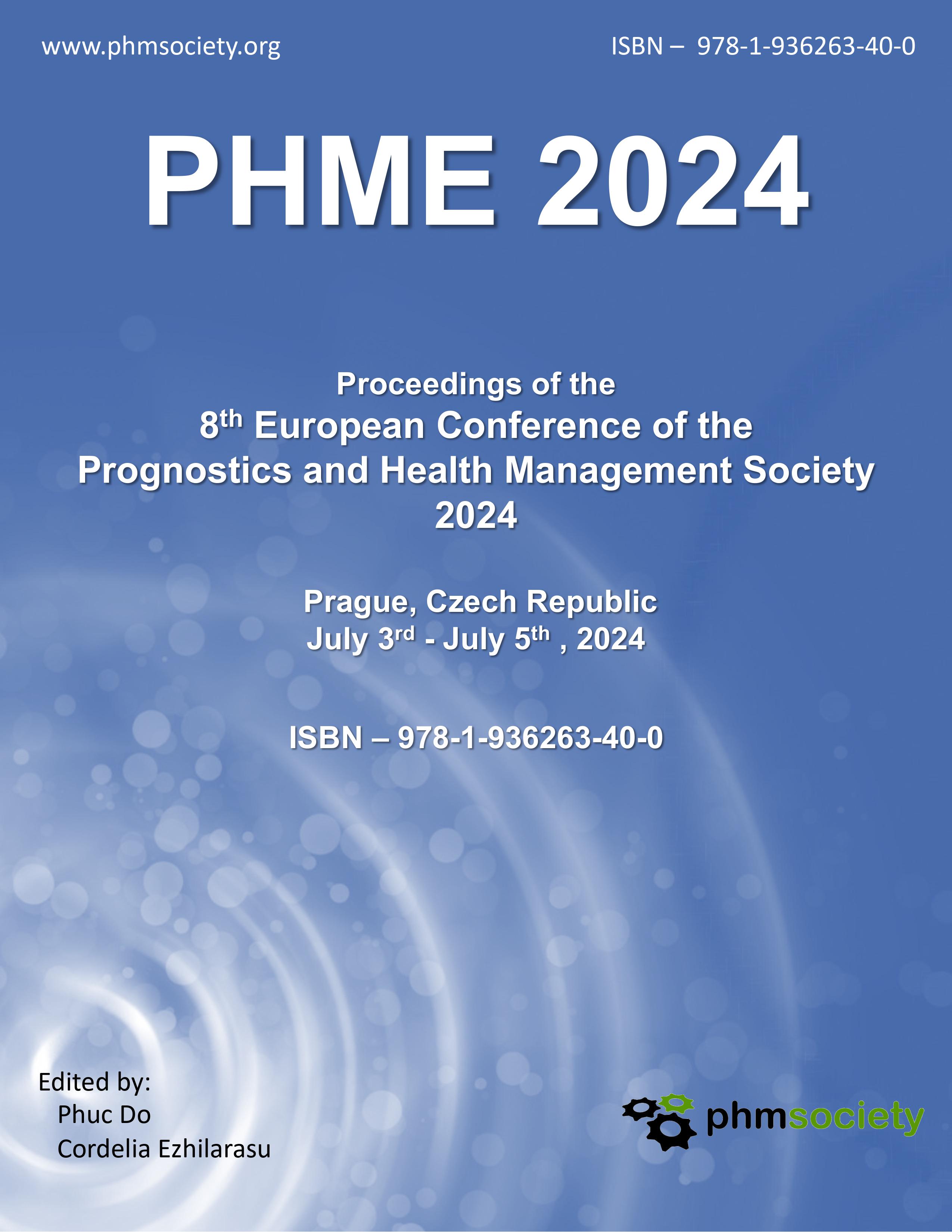An Experiment on Anomaly Detection for Fault Vibration Signals Using Autoencoder-Based N-Segmentation Algorithm
##plugins.themes.bootstrap3.article.main##
##plugins.themes.bootstrap3.article.sidebar##
Abstract
Most manufacturing facilities driven by motors generate vibration and noise representing critical symptoms against facility malfunctioning conditions in the manufacturing industry. Due to the difficulty of obtaining abnormal data from facilities in manufacturing sites, many prior researchers who have studied predicting facility faults have adopted unsupervised learning-based anomaly detection approaches. Although these approaches have a strength requiring only data on from facility normal behaviors, it is not clear that the anomalies detected by an anomaly detection model are due to the real component faults. Also, the model performance is likely to change according to the diverse abnormal conditions of the given facility. In this paper, we took an experiment with a fault vibration simulator to measure the anomaly detection performance of a one-dimensional convolutional autoencoder model with different fault conditions. In the experiment, we used four different abnormal conditions: imbalance, misalignment, looseness, and bearing faults, which are the most frequently occurring facility component failures from the rotating machineries. Data were gathered from the simulator with the IEPE(Integrated Electronics Piezo-Electric) type sensor. We proposed the N-Segmentation algorithm that performs anomaly detection in segmented frequency region according to corresponding component faults for better anomaly detection performance. In conclusion, the proposed algorithm showed about 15 times better anomaly detection rate than not applying it.
How to Cite
##plugins.themes.bootstrap3.article.details##
Anomaly Detection, Autoencoder, Artificial Intelligence, Smart Manufacturing, Predictive Maintenance
Amarbayasgalan, T., Pham, V. H., Theera-Umpon, N., & Ryu, K. H. (2020). Unsupervised anomaly detection approach for time-series in multi-domains using deep reconstruction error. Symmetry, 12(8), 1251.
Chen, S., Yu, J., & Wang, S. (2020). One-dimensional convolutional auto-encoder-based feature learning for fault diagnosis of multivariate processes. Journal of Process Control, 87, 54-67.
Hassan, I. U., Panduru, K., & Walsh, J. (2024). An In-Depth Study of Vibration Sensors for Condition Monitoring. Sensors, 24(3), 740.
Hiruta, T., Maki, K., Kato, T., & Umeda, Y. (2021). Unsupervised learning based diagnosis model for anomaly detection of motor bearing with current data. Procedia CIRP, 98, 336-341.
Kamat, P., Marni, P., Cardoz, L., Irani, A., Gajula, A., Saha, A., Kumar, S. & Sugandhi, R. (2021). Bearing fault detection using comparative analysis of random forest, ANN, and autoencoder methods. In Communication and Intelligent Systems: Proceedings of ICCIS 2020 (pp. 157-171). Springer Singapore.
Kang, J., Kim, C. S., Kang, J. W., & Gwak, J. (2021). Anomaly detection of the brake operating unit on metro vehicles using a one-class LSTM autoencoder. Applied Sciences, 11(19), 9290.
Kumar, P., Khalid, S., & Kim, H. S. (2023). Prognostics and Health Management of Rotating Machinery of Industrial Robot with Deep Learning Applications—A Review. Mathematics, 11(13), 3008.
Lee, Y. K., Lee, S., & Kim, S. H. (2024). Real-Time Defect Monitoring of Laser Micro-drilling Using Reflective Light and Machine Learning Models. International Journal of Precision Engineering and Manufacturing, 25(1), 155-164.
Li, X., Li, X., & Ma, H. (2020). Deep representation clustering-based fault diagnosis method with unsupervised data applied to rotating machinery. Mechanical Systems and Signal Processing, 143, 106825.
Panza M. A., Pota M., & Esposito, M. (2023). Anomaly Detection Methods for Industrial Applications: A Comparative Study. Electronics. 2023; 12(18)
Park, K., & Lee, Y. (2023). Anomaly Detection in a Combined Driving System based on Unsupervised Learning. Journal of the Korean Society for Precision Engineering, 40(11), 921-928.
Schleipen, M., Gilani, S. S., Bischoff, T., & Pfrommer, J. (2016). OPC UA & Industrie 4.0-enabling technology with high diversity and variability. Procedia Cirp, 57, 315-320.
Shreve, D. H. (1994). Introduction to vibration technology. Proceedings of Predictive Maintenance Technology Conference. November.
Thi, N. D. T., Do, T. D., Jung, J. R., Jo, H., & Kim, Y. H. (2020). Anomaly detection for partial discharge in gas-insulated switchgears using autoencoder. IEEE Access, 8, 152248-152257.
Wei, Y., Jang-Jaccard, J., Xu, W., Sabrina, F., Camtepe, S., & Boulic, M. (2023). LSTM-autoencoder-based anomaly detection for indoor air quality time-series data. IEEE Sensors Journal, 23(4), 3787-3800.
Wisal, M., & Oh, K. Y. (2023). A New Deep Learning Framework for Imbalance Detection of a Rotating Shaft. Sensors, 23(16), 7141.
Xu, W., Jang-Jaccard, J., Singh, A., Wei, Y., & Sabrina, F. (2021). Improving performance of autoencoder-based network anomaly detection on nsl-kdd dataset. IEEE Access, 9, 140136-140146.
Zhang, L., Lin, J., Liu, B., Zhang, Z., Yan, X., & Wei, M. (2019). A review on deep learning applications in prognostics and health management. IEEE Access, 7, 162415-162438.
Zhang, Y., Wang, Y., Yi, Y., Wang, J., Liu, J., & Chen, Z. (2021). Coupling matrix extraction of microwave filters by using one-dimensional convolutional autoencoders. Frontiers in Physics, 521.

This work is licensed under a Creative Commons Attribution 3.0 Unported License.
The Prognostic and Health Management Society advocates open-access to scientific data and uses a Creative Commons license for publishing and distributing any papers. A Creative Commons license does not relinquish the author’s copyright; rather it allows them to share some of their rights with any member of the public under certain conditions whilst enjoying full legal protection. By submitting an article to the International Conference of the Prognostics and Health Management Society, the authors agree to be bound by the associated terms and conditions including the following:
As the author, you retain the copyright to your Work. By submitting your Work, you are granting anybody the right to copy, distribute and transmit your Work and to adapt your Work with proper attribution under the terms of the Creative Commons Attribution 3.0 United States license. You assign rights to the Prognostics and Health Management Society to publish and disseminate your Work through electronic and print media if it is accepted for publication. A license note citing the Creative Commons Attribution 3.0 United States License as shown below needs to be placed in the footnote on the first page of the article.
First Author et al. This is an open-access article distributed under the terms of the Creative Commons Attribution 3.0 United States License, which permits unrestricted use, distribution, and reproduction in any medium, provided the original author and source are credited.
